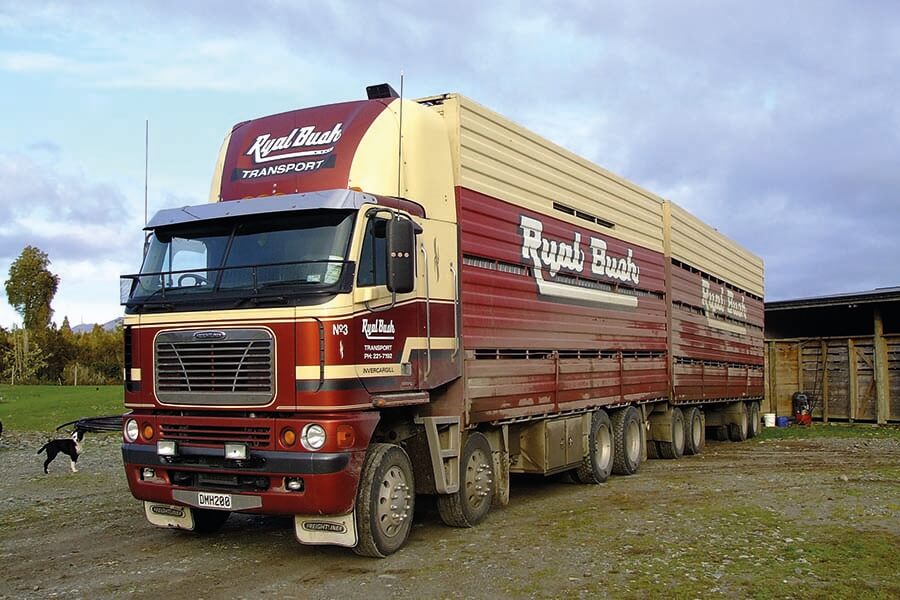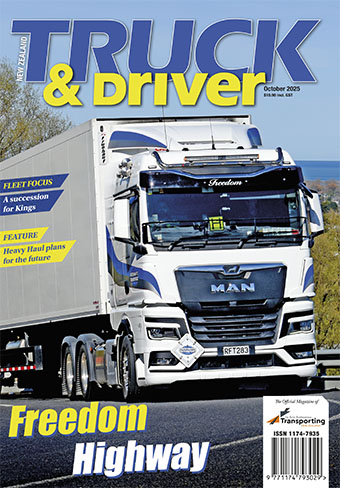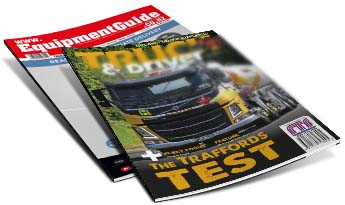Ia Ara Aotearoa Transporting New Zealand News


Livestock operators the meat in the sandwich
The Road Transport Forum is concerned at the impact that tighter regulatory enforcement around work hours is having on livestock transport, a sector already under increasing pressure due to the unique nature of its work.
A targeted operation by Waka Kotahi New Zealand Transport Agency in the Manawatu led to RTF engaging with the relevant regulators on a range of issues and pressures felt by operators in this sector.
“While the RTF remains committed to ensuring our industry is compliant, we are concerned that the approach of regulators could be too punitive – without a total picture of the chain of responsibility, and the expectations and conflicting rules of other customers and suppliers that cut across the work of livestock transporters,” says chief executive Nick Leggett.
“Transporting livestock is one of the most difficult transport tasks because it deals with live animals – whose welfare must be paramount. It is fair to say that at the moment livestock operators feel as though they are the meat in the sandwich – getting squeezed from both sides.”
The Transport Within NZ Code of Welfare sets minimum standards and recommends best practice for the care and management of animals. It states that there must be a contingency plan in place – allowing the needs of animals to be met in the event of any delays arising during the part of the journey for which the transport operator is responsible.
...The Road Transport Forum is concerned at the impact that tighter regulatory enforcement around work hours is having on livestock transport, a sector already under increasing pressure due to the unique nature of its work.
A targeted operation by Waka Kotahi New Zealand Transport Agency in the Manawatu led to RTF engaging with the relevant regulators on a range of issues and pressures felt by operators in this sector.
“While the RTF remains committed to ensuring our industry is compliant, we are concerned that the approach of regulators could be too punitive – without a total picture of the chain of responsibility, and the expectations and conflicting rules of other customers and suppliers that cut across the work of livestock transporters,” says chief executive Nick Leggett.
“Transporting livestock is one of the most difficult transport tasks because it deals with live animals – whose welfare must be paramount. It is fair to say that at the moment livestock operators feel as though they are the meat in the sandwich – getting squeezed from both sides.”
The Transport Within NZ Code of Welfare sets minimum standards and recommends best practice for the care and management of animals. It states that there must be a contingency plan in place – allowing the needs of animals to be met in the event of any delays arising during the part of the journey for which the transport operator is responsible.
“We only have to think back to when Auckland went into COVID-19 level 3 in February, when some livestock operators were caught in traffic jams at police checkpoints for up to six hours in summer heat….which was unacceptable in anyone’s view,” says Leggett.
The welfare of animals during transportation often involves a chain of changing responsibility because different people may carry out different parts of the process. Under the Animal Welfare Act 1999, both the owner and the person (or persons) in charge of animals have responsibilities for meeting the animals’ needs.
At an operational level, those responsible for carrying out particular tasks in the transport process are likely to be considered the person(s) in charge for the purposes of the Animal Welfare Act and are responsible for ensuring that applicable minimum standards in the Code of Welfare are met.
One Manawatu livestock operator said the biggest concern was looking after animal welfare. He said once livestock are on board a truck they have to be delivered – and cannot be left to the following day.
“If stock are at the saleyards they also need to be shifted, as there aren’t adequate facilities to hold them overnight. A day organised to meet delivery times and logbook requirements can quickly turn to custard because a farmer is not ready, or there’s a holdup at the meatworks. After that it’s hard to recover time, and there isn’t a surplus of trucks or drivers to cover the overrun.”
The operator said the other things they have to contend with include poor facilities that result in trucks getting stuck; some stock taking longer to load than others; accidents on highways holding up traffic – and H-permitted trucks being unable to take detours after accidents.
There’s also the extra time and distance they have to travel due to the permanent closure of the Manawatu Gorge. The Saddle Road, one of the two alternative routes to the Gorge, has also experienced a number of closures, and going via the Pahiatua Track takes a lot longer.
RTF previously had success arguing that farmers – not truck drivers – should be ultimately responsible for the transportation of correctly-tagged animals under the NAIT regime.
The industry has also made considerable progress in recent years working with the farming sector to minimise the risk of livestock being injured during transportation.
Leggett says discussions have begun about the key pressures in the chain of responsibility: “Our view is that the industry cannot be held to unfair account for problems and pressures that begin elsewhere in the chain of responsibility. With animal welfare rightfully being of utmost importance, livestock transporters being able to lawfully operate with good cross-regulator and customer understanding is paramount.
“If a truck full of non-perishable freight gets stuck in traffic the delay may be frustrating, but for a stock truck loaded with cattle or sheep it becomes a huge problem.”
Leggett says that RTF and livestock transport operators have met with Waka Kotahi, WorkSafe NZ and the Ministry of Primary Industries to help these agencies get a better understanding of the issues….
And to find a solution that will result in a better-functioning chain of responsibility that doesn’t put undue stress on transport when moving live animals around NZ.
“At the end of the day, NZ’s reputation as a food exporter rests on our good treatment of both animals and people, so it is essential there are measures in place across the full chain of responsibility to ensure we meet that expectation,” he adds.



 + EQUIPMENT GUIDE - FREE
+ EQUIPMENT GUIDE - FREE
